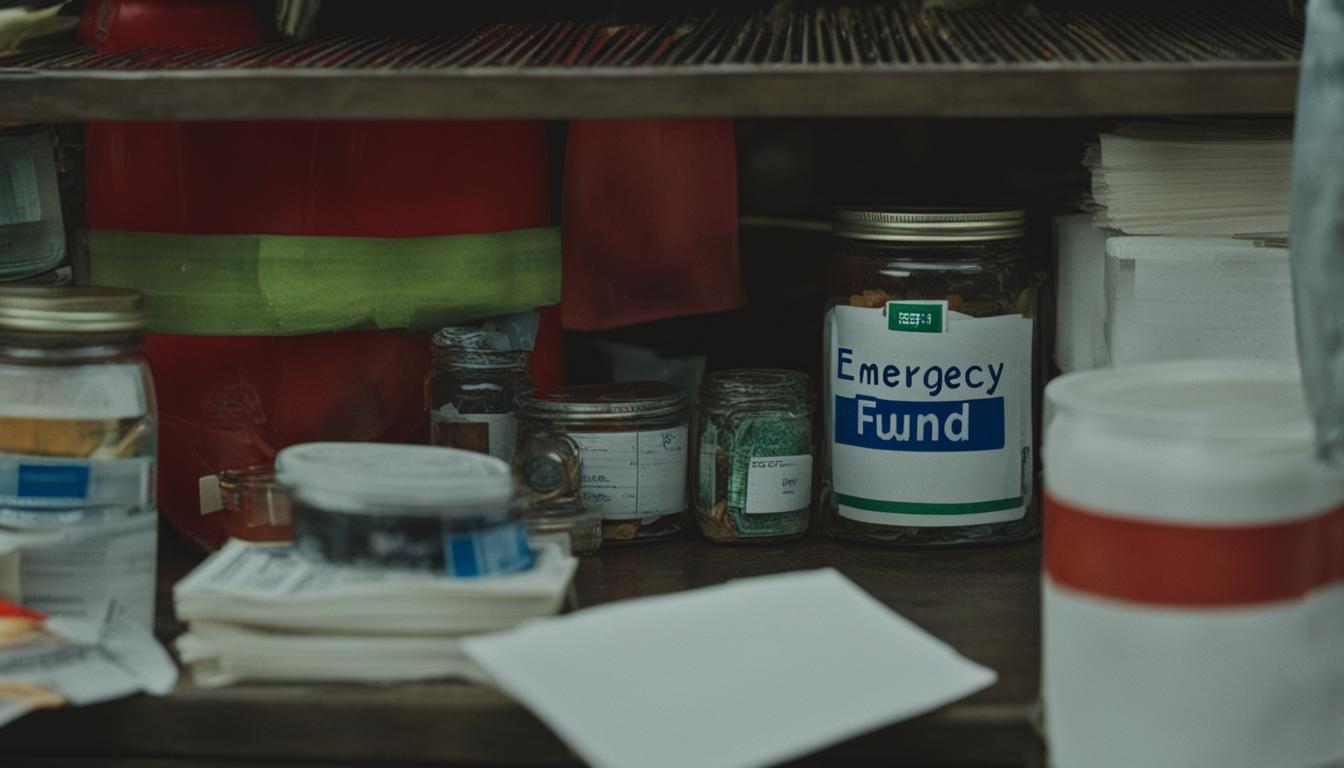When it comes to financial planning, having an emergency fund is crucial. Life is unpredictable, and unexpected expenses can arise at any time. That’s why it’s essential to be prepared with a safety net that can provide financial stability during difficult times.
Emergency Fund Planning is all about ensuring that you have enough money set aside to cover unexpected emergencies, such as job loss, medical expenses, or car repairs. It acts as a financial cushion, giving you peace of mind and protecting you from falling into debt or relying on expensive credit options.
Key Takeaways:
- Having an emergency fund is crucial for financial security during unexpected crises.
- The recommended amount for an emergency fund is 3 to 6 months’ worth of living expenses.
- Consider factors like your industry’s stability, income stability, and personal circumstances when determining your savings goal.
- Start small and save regularly, even small amounts can add up over time.
- Keep your emergency fund in a separate savings account for easy access when needed.
How to Start an Emergency Fund
Building an emergency fund is an essential step towards long-term financial security. But where do you start? Here are some strategies to help you kickstart your emergency savings:
- Set a savings goal: Determine how much you want to save in your emergency fund. Consider your monthly expenses, financial obligations, and any potential risks in your industry or personal circumstances.
- Automate your savings: Make saving effortless by setting up automatic transfers from your paycheck into a dedicated emergency fund account. This way, you won’t have to rely on willpower alone to save consistently.
- Trim unnecessary expenses: Evaluate your monthly budget and identify areas where you can cut back. Redirect the money saved from those non-essential expenses towards your emergency fund. Small sacrifices now can lead to significant savings over time.
- Increase your income: Explore ways to boost your earning potential. Consider taking on a side job, freelancing, or selling unused items to generate extra income. The additional funds can be directed towards building your emergency fund.
- Create a budget: Develop a budget to track your expenses and identify areas where you can save more. By understanding your spending habits, you’ll be able to make informed decisions and prioritize your emergency fund.
Remember, starting small is better than not starting at all. Even saving a modest amount regularly can make a difference. Be consistent and stay committed to building your emergency fund. Your future self will thank you for the financial security it provides.
The Importance of an Emergency Fund
An emergency fund is a crucial part of financial planning. It provides a safety net and offers peace of mind during unexpected crises. Whether it’s a job loss, a medical emergency, or a major car repair, having an emergency fund can help you navigate these challenging situations without going into debt or relying on credit cards.
By having enough money set aside in an emergency fund, you can cover your essential living expenses and maintain stability during times of uncertainty. It allows you to have financial security and avoid tapping into your long-term savings or retirement funds, keeping you on track with your future goals.
Building an emergency fund should be a priority for everyone, regardless of income or age. It’s never too early or too late to start saving. Even small amounts saved regularly can add up over time and provide a valuable cushion when you need it most.
How Much to Save in an Emergency Fund?
A crucial aspect of building an emergency fund is determining the right amount to save. While experts typically recommend having 3 to 6 months’ worth of living expenses, the actual savings goal may vary based on individual circumstances. To calculate your specific target, consider using an emergency fund calculator.
An emergency fund calculator takes into account factors such as your income stability, job security, and sector volatility to help you determine an appropriate savings goal. By inputting accurate information, you can get a more precise estimate of how much you should aim to save. This calculative approach ensures that you have a clear target to work towards.
When using an emergency fund calculator, focus on covering necessary expenses like rent or mortgage, utilities, food, and other essential costs. By identifying these critical expenses, you can gain a better understanding of the minimum amount needed to maintain financial stability during unexpected emergencies.
Factors to Consider
- Your income stability: Individuals with stable and predictable income streams may require a smaller emergency fund compared to those with irregular or inconsistent earnings.
- Job security: Assess the risk associated with your occupation or industry. If you work in a high-risk field, it may be wise to save more in case of unforeseen job loss.
- Sector volatility: Certain industries experience more significant fluctuations and economic downturns. Consider the stability of your sector when determining your emergency fund savings goal.
Remember, an emergency fund is designed to provide financial security during challenging times. By personalizing your savings goal using an emergency fund calculator, you can ensure that your fund meets your individual needs and circumstances.
Where to Keep Your Emergency Savings
When it comes to storing your emergency fund, it’s important to choose the right place. The ideal option is a savings account, as it offers easy access to your funds when needed. Look for a high-yield savings account that provides a higher interest rate, allowing your savings to grow over time. Keeping your emergency savings separate from your regular checking account is a good practice to avoid mingling funds and ensure your emergency fund remains untouched for its intended purpose.
By storing your emergency savings in a savings account, you can quickly withdraw the required funds during unexpected situations without incurring any penalties or fees. It provides a level of financial security, offering peace of mind knowing that your rainy day fund is easily accessible when you need it the most.
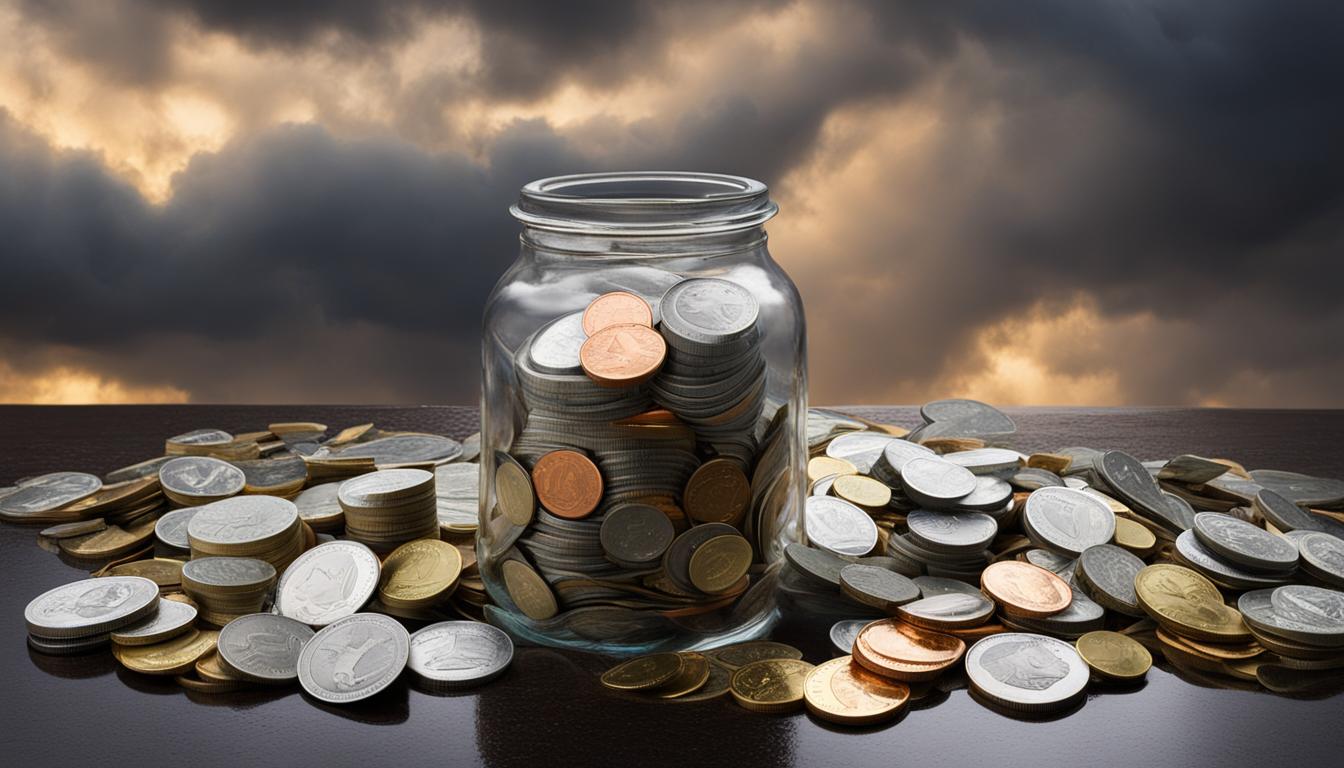
Key Takeaways:
- A savings account is the best place to keep your emergency fund, offering easy access to your funds when needed.
- Look for high-yield savings accounts that provide higher interest rates to help your savings grow over time.
- Avoid investing your emergency fund in volatile assets like stocks or bonds, as they can be subject to fluctuations.
- Keep your emergency savings separate from your regular checking account to avoid mingling funds and ensure your emergency fund remains untouched.
Factors to Consider for Your Emergency Fund
When it comes to building an emergency fund, there are several factors you should consider to ensure you have the right amount of savings to provide financial security in emergencies. These factors can vary depending on your individual circumstances and preferences.
- Job Security: If you work in a highly volatile industry or have a job with unstable income, it’s recommended to have a larger emergency fund to cover any potential income disruptions.
- Income Stability: Consider the stability of your income when determining the size of your emergency fund. Those with irregular or unpredictable income may need a larger fund to account for any fluctuations.
- Personal Preferences: Your comfort level and risk tolerance should also be taken into account. Some individuals may prefer to have a larger emergency fund for added peace of mind, while others may feel comfortable with a smaller fund.
Ultimately, the right amount for your emergency fund depends on your specific situation. It’s important to carefully assess your circumstances, taking into consideration your job security, income stability, and personal preferences. By doing so, you can ensure that your emergency fund provides the necessary financial security in times of unexpected crises.
Key Takeaways:
- Job security and income stability are important factors to consider when determining the size of your emergency fund.
- Personal preferences and risk tolerance should also be taken into account.
- The right amount for your emergency fund depends on your individual circumstances.
Strategies for Building an Emergency Fund
Building an emergency fund is crucial for financial security in times of unexpected crises. Here are some effective strategies to help you save for emergencies:
- Make saving a priority: Prioritize your savings by setting aside a specific amount each month. Treat it as a non-negotiable expense and automate regular transfers from your paycheck to your emergency fund account.
- Cut back on unnecessary expenses: Review your budget and identify areas where you can reduce spending. Consider eliminating non-essential costs like eating out or subscription services and redirect that money towards your emergency fund.
- Find ways to increase your income: Explore options to boost your income, such as taking on a side job, freelancing, or selling unused items. Generating additional income can accelerate your savings and help you reach your emergency fund goal faster.
- Create a budget and track expenses: Developing a budget allows you to identify where your money is going and where you can make adjustments. Use budgeting tools or apps to track your expenses and monitor progress towards your savings goal.
Remember, building an emergency fund takes time and discipline, but the peace of mind that comes with having a financial safety net is invaluable. Celebrate milestones along the way and stay motivated on your savings journey!
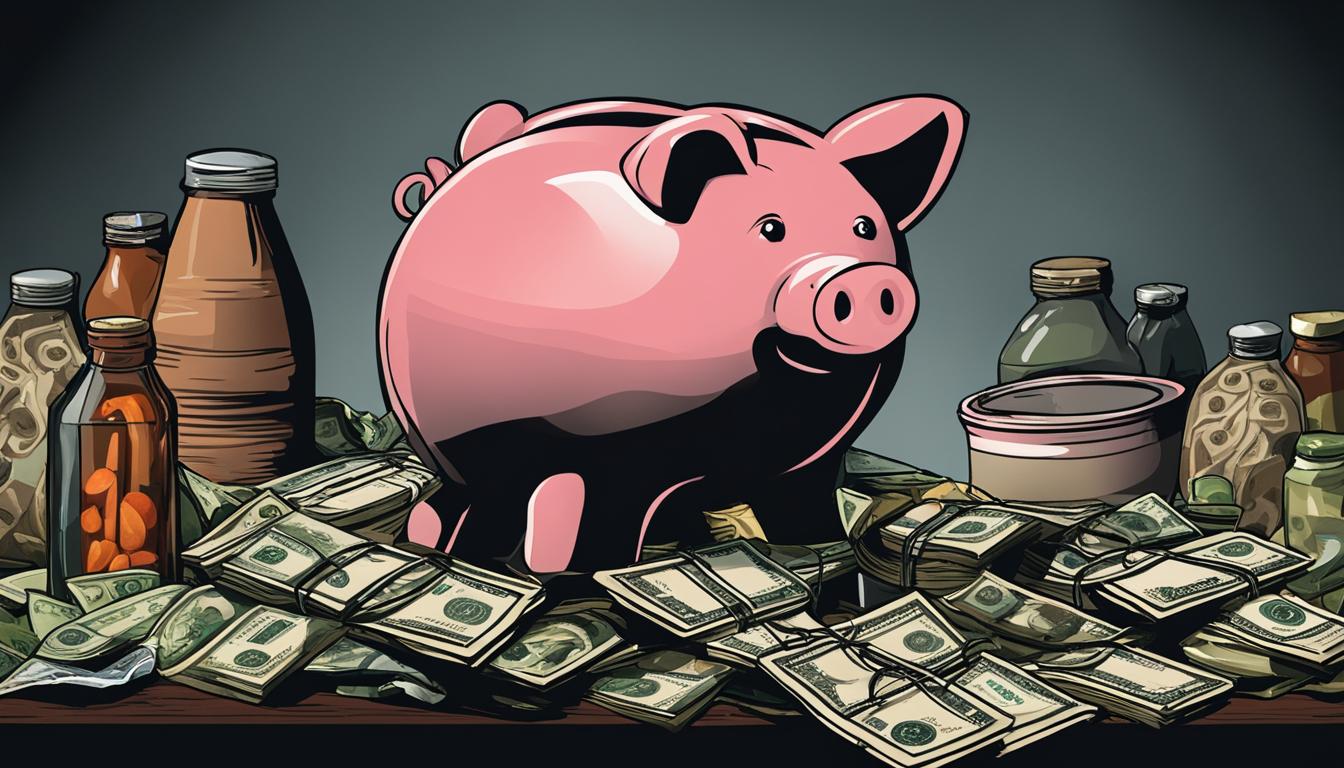
The Role of an Emergency Fund During a Recession
During a recession, unemployment rates are higher, and the length of unemployment is often longer. It becomes crucial to have a well-funded emergency fund to provide a safety net during these uncertain economic times. Your emergency fund can help you cover your living expenses and maintain financial stability even if you lose your job.
By having a fully stocked emergency fund, you can avoid dipping into your retirement funds or taking on unnecessary debt, preserving your long-term financial security. It allows you to navigate through the economic downturn without derailing your financial goals.
Building an emergency fund is especially important during a recession, as it provides a cushion for unexpected expenses and income fluctuations. It gives you peace of mind and the ability to weather financial storms, ensuring that you can continue to meet your essential needs.
Why Your Emergency Fund Matters
“During tough economic times, having an emergency fund is like having a financial lifeline. It can help you stay afloat and maintain stability when everything else seems uncertain.”
By having a well-funded emergency fund, you can confidently face an economic recession, knowing that you have a financial safety net to rely on. It is a crucial component of your overall financial plan, providing stability and peace of mind when unexpected situations arise.
Building Your Emergency Fund
- Set a savings goal: Determine how much you want to save for your emergency fund. Aim to have at least 3 to 6 months’ worth of living expenses.
- Automate your savings: Set up automatic transfers from your paycheck to your emergency fund account. This ensures consistent contributions and makes saving effortless.
- Reduce unnecessary expenses: Cut back on non-essential expenses and redirect that money towards your emergency fund. Consider ways to save on daily expenses without sacrificing your quality of life.
- Increase your income: Look for opportunities to boost your income, such as taking on a side job or freelancing. The additional earnings can accelerate your emergency fund growth.
- Stay committed: Make saving for emergencies a priority. Celebrate milestones along the way to stay motivated and reinforce positive saving habits.
The Benefits of Starting Small
When it comes to building an emergency fund, starting small can have big advantages. While it may be tempting to wait until you have a large sum of money to save, the truth is that even saving small amounts consistently can make a significant impact over time. The key is to get started and make saving a regular habit.
By starting small, you can set achievable goals that are easier to reach. Whether it’s saving $25 a week or $100 a month, these small contributions can add up quickly. In fact, saving just $25 a week can accumulate to $2,600 in just two years. This can provide you with a solid financial safety net for unexpected emergencies.
Starting small also allows you to gradually increase your savings as your financial situation improves. As you become more comfortable with saving and see the positive impact it has on your finances, you can set higher savings goals and start allocating more money towards your emergency fund. This incremental approach helps you build financial resilience and adapt to changing circumstances.
Remember, the most important thing is to get started. Regardless of how small your initial contributions may be, they are the building blocks towards a secure financial future. So start small, stay committed, and watch your emergency fund grow.
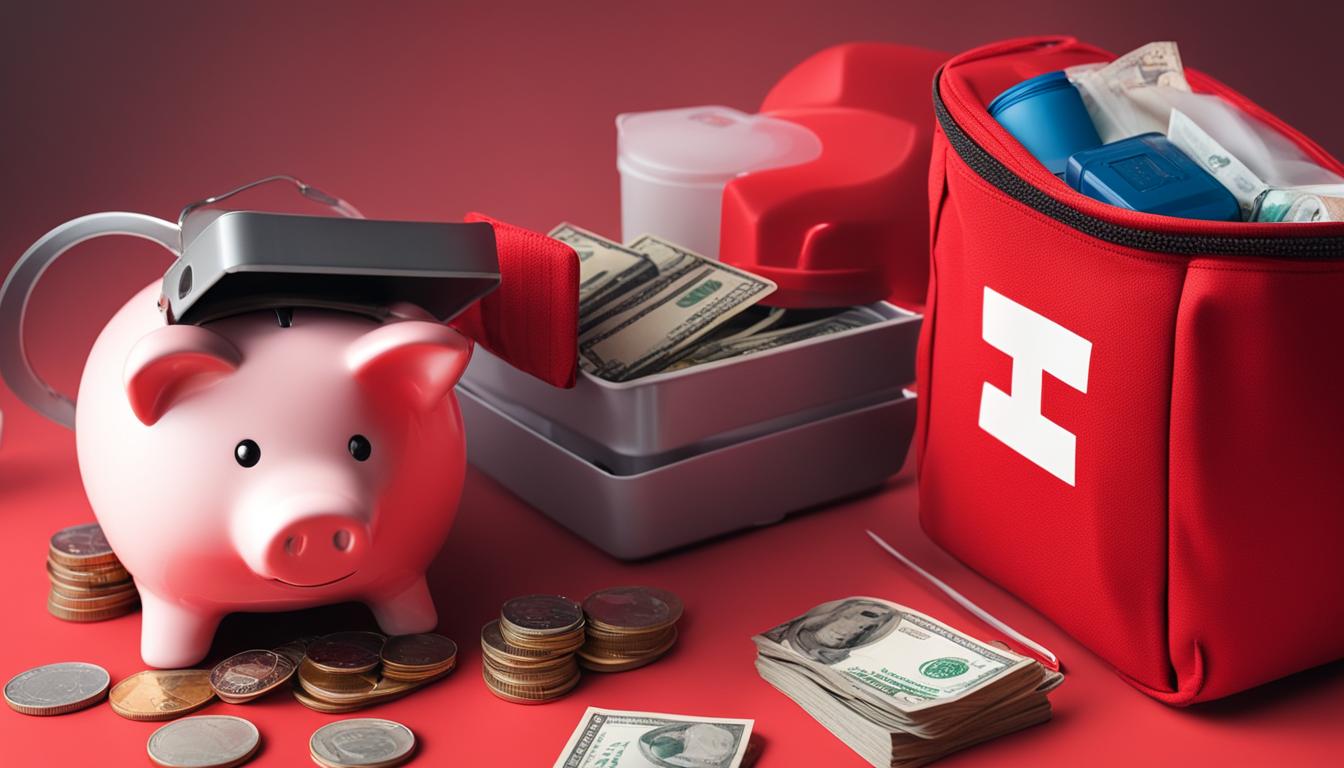
Tips for Maintaining Your Emergency Fund
Once you’ve built your emergency fund, it’s crucial to maintain it for long-term financial security. Here are some strategies to help you keep your emergency savings intact:
- Set a Budget: Having a budget allows you to track your expenses and ensure that you’re not overspending. By being mindful of your spending habits, you can identify areas where you can cut back and allocate more towards your emergency fund.
- Avoid Temptations: It’s important to resist the urge to dip into your emergency fund for non-emergency expenses. Remember, it’s there to provide you with a safety net during unexpected financial hardships.
- Automate Your Savings: Consider automating regular contributions to your emergency fund. Set up automatic transfers from your paycheck to ensure that a portion goes directly into your savings account without you having to think about it.
- Revisit Your Savings Goal: Periodically reassess your savings goal to account for any changes in your financial situation. If you experience an increase in income or decrease in expenses, you may be able to adjust your savings goal accordingly.
- Celebrate Milestones: Celebrate each milestone reached along your savings journey. Whether it’s reaching a specific savings target or maintaining your emergency fund for a certain period, acknowledging your achievements can help keep you motivated.
Remember, an emergency fund is your financial safety net. By following these tips and making saving a priority, you’ll be better equipped to handle unexpected expenses and maintain your financial stability.
Considerations for Retirees
Retirees face unique financial challenges, and having an emergency fund is crucial for maintaining financial security in emergencies. While it is generally recommended to have 3 to 6 months’ worth of living expenses in an emergency fund, retirees may want to consider saving more due to potential healthcare costs, inflation, and other factors specific to their situation.
Retirees often have a significant portion of their savings invested in more volatile assets, such as stocks or bonds. By maintaining a separate emergency fund, retirees can protect their retirement funds from market fluctuations and have a financial safety net for unexpected expenses or income fluctuations.
Having a rainy day fund for retirees provides peace of mind and flexibility. It allows retirees to cover unforeseen expenses, such as home repairs or medical bills, without tapping into their long-term retirement savings. By having readily accessible funds, retirees can navigate potential financial hardships while still enjoying the retirement lifestyle they worked hard to achieve.
Remember, financial security in emergencies is just as important during retirement as it is during your working years. By building and maintaining an emergency fund, retirees can have the peace of mind and flexibility needed to weather unexpected financial challenges.
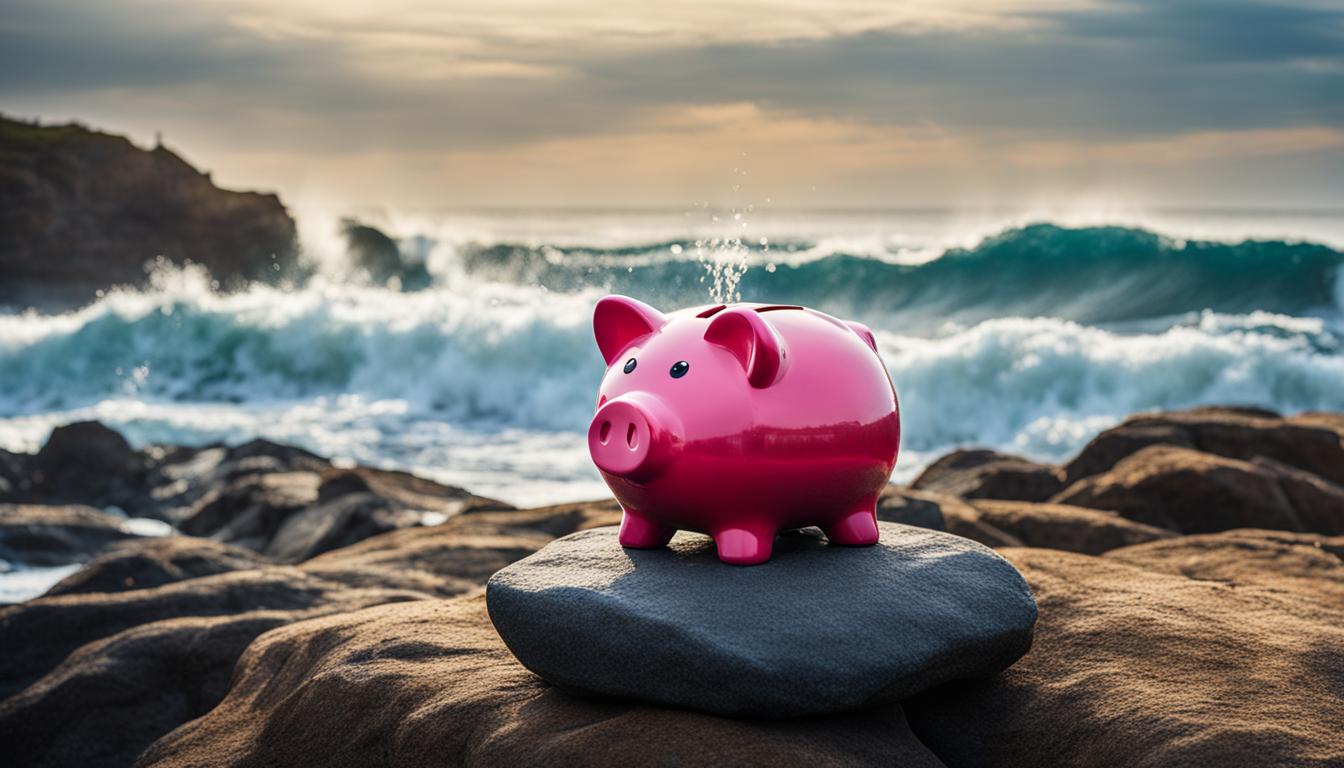
Conclusion
Building an emergency fund is an essential part of financial planning. It provides a safety net and financial security in times of unexpected crises. By determining your savings goal based on factors such as income stability and job security, you can start building your emergency fund and ensure long-term financial stability.
Remember, starting small and making saving a regular habit is key. Celebrate milestones along the way to stay motivated and reinforce positive saving habits. Keep your emergency fund in a separate savings account for easy access when needed, and avoid dipping into it for non-emergency expenses.
Having a well-funded emergency fund not only gives you peace of mind, but it also protects you from relying on credit cards, loans, or tapping into your long-term savings or retirement funds. It provides a financial cushion that allows you to cover necessary expenses and navigate through unexpected situations with confidence. Start your emergency fund today and take control of your financial future.
FAQ
How much money should I have in my emergency fund?
Most experts recommend having enough money in your emergency fund to cover 3 to 6 months’ worth of living expenses.
How do I start an emergency fund?
Start by setting a savings goal and determining how much you can save each month. Consider automating your savings and cutting unnecessary expenses.
Why is an emergency fund important?
An emergency fund provides financial security in times of unexpected crises, such as job loss, medical emergencies, or car repairs. It prevents you from going into debt and relying on credit cards or loans.
How do I determine how much to save in my emergency fund?
It is recommended to save 3 to 6 months’ worth of living expenses. Use an emergency fund calculator to determine your specific savings goal based on factors such as income stability and job security.
Where should I keep my emergency savings?
A savings account is the best place to keep your emergency fund as it provides easy access to cash when needed.
What factors should I consider when building my emergency fund?
Consider factors such as your job security, income stability, and personal preferences when determining the right amount for your emergency fund.
How can I build my emergency fund?
Prioritize your savings, automate contributions, cut back on unnecessary expenses, and look for ways to increase your income.
How does an emergency fund help during a recession?
An emergency fund provides a safety net during uncertain economic times, allowing you to cover your living expenses and maintain financial stability even if you lose your job.
What if I can’t save a large amount immediately?
Starting small and consistently saving even small amounts can still make a significant impact over time. Set achievable goals and gradually increase your savings as your financial situation improves.
How do I maintain my emergency fund?
Avoid using your fund for non-emergency expenses, automate regular contributions, and revisit your savings goal periodically based on changes in your financial situation.
Do retirees need an emergency fund?
Yes, retirees should have an emergency fund to cover unexpected expenses or income fluctuations. Consider saving more than the recommended 3 to 6 months’ worth of living expenses.
Why is building an emergency fund important for long-term financial security?
Building an emergency fund provides peace of mind and financial stability during unexpected crises, allowing you to avoid tapping into retirement funds or taking on debt.

